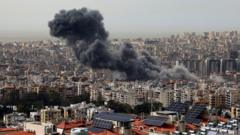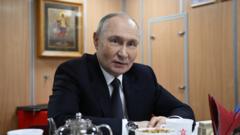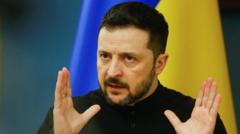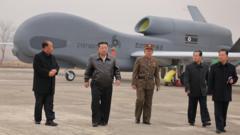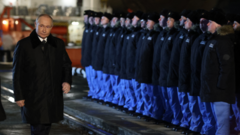**While progress is made in ceasefire negotiations between the US, Russia, and Ukraine, substantial hurdles remain before meaningful peace can be achieved.**
**Ceasefire Talks Yield Fragile Accords Amid Skepticism**
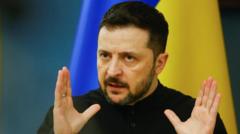
**Ceasefire Talks Yield Fragile Accords Amid Skepticism**
**New agreements in Saudi Arabia highlight complexities of peace efforts in the Ukraine conflict**
With three days of intense discussions in Saudi Arabia culminating in agreements, the situation surrounding the Ukraine conflict sees a glimmer of hope, albeit a fragile one. Leaders from the US, Russia, and Ukraine drafted two separate documents outlining mutual understandings. Notably, these agreements emphasize crucial strategies to ensure maritime safety in the Black Sea and prevent military use of commercial vessels. Furthermore, a proposed ban on strikes against energy infrastructure was included, although President Zelensky expressed disappointment over the lack of explicit protections for civilian sites.
Zelensky, however, characterized the developments positively, indicating Ukraine’s readiness to implement the ceasefire measures on maritime conduct and energy facilities. The US affirmed its support for initiatives aimed at prisoner exchanges and addressing the issue of forcibly relocated Ukrainian children.
Yet, the clarity of this newfound diplomatic consensus is complicated by a third document issued from the Kremlin, imposing further conditions regarding economic sanctions relief. Russia's insistence that sanctions be lifted on its banks and agriculture exports before fully committing to the Black Sea ceasefire introduces additional contention. This suggests these agreements are viewed as a step not only toward peace but as leverage to alter economic pressures that have been placed on Russia.
Moreover, the Kremlin indicated that a proposed pause on energy strikes would only begin retroactively while also leaving room to re-evaluate the ceasefire if violations occur from either party. This highlights the precariousness of the situation, marked by mutual distrust and the historical difficulty of executing ceasefire agreements, which are often more procedural than definitive.
As the world watches, the critical question remains: Will these parties sincerely commit to the ceasefire for a longer-term resolution, or will this simply be a tactical pause allowing them to regroup militarily? The ultimate success hinges on both sides' willingness to embrace genuine diplomacy over the continuation of conflict.
Zelensky, however, characterized the developments positively, indicating Ukraine’s readiness to implement the ceasefire measures on maritime conduct and energy facilities. The US affirmed its support for initiatives aimed at prisoner exchanges and addressing the issue of forcibly relocated Ukrainian children.
Yet, the clarity of this newfound diplomatic consensus is complicated by a third document issued from the Kremlin, imposing further conditions regarding economic sanctions relief. Russia's insistence that sanctions be lifted on its banks and agriculture exports before fully committing to the Black Sea ceasefire introduces additional contention. This suggests these agreements are viewed as a step not only toward peace but as leverage to alter economic pressures that have been placed on Russia.
Moreover, the Kremlin indicated that a proposed pause on energy strikes would only begin retroactively while also leaving room to re-evaluate the ceasefire if violations occur from either party. This highlights the precariousness of the situation, marked by mutual distrust and the historical difficulty of executing ceasefire agreements, which are often more procedural than definitive.
As the world watches, the critical question remains: Will these parties sincerely commit to the ceasefire for a longer-term resolution, or will this simply be a tactical pause allowing them to regroup militarily? The ultimate success hinges on both sides' willingness to embrace genuine diplomacy over the continuation of conflict.


